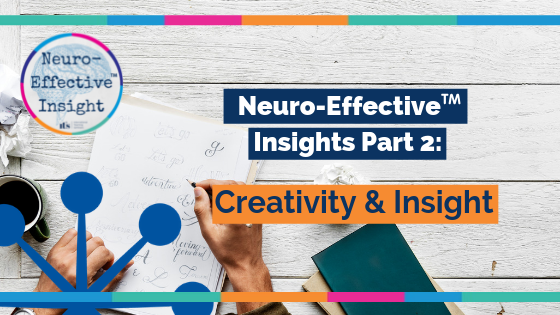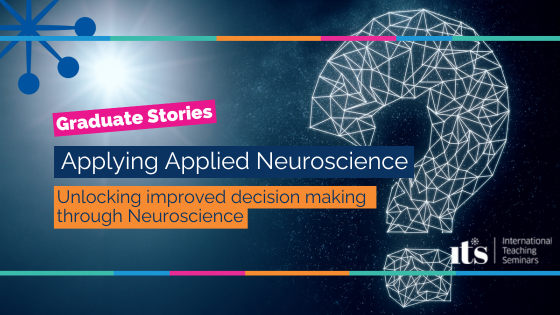Neuro-Effective™ Insights: Part 2 Creativity & Insight
Our brains are designed to access information that is easy first – but that’s not necessarily creative. So how do we give our brains the space to be creative and access ideas that aren’t as easy? How do we access information that’s harder to get at?
Quite often people don’t recognise their own creativity or problem-solving abilities. They think if it’s not absolutely original then it doesn’t really count.
In times of economic hardship, one way for individuals and organisations to survive is to be more innovative than their competitors. Innovation requires creativity, problem solving and insight to come up with new products, new solutions or new markets.
One of the wonders of the human brain is its ability to come up with completely novel ideas. This does not just happen – as anyone who has sweated over coming up with a new idea will know. However, sometimes, we are all capable of moments of insight where an idea or a solution comes to us out of the blue. What is it that happens in the brain during these moments? And how can we create this type of original thinking when we need it most? Would you even know if you are creative? How?
Neuro-Effective™ Insights
Neuro-Effective™ Insight #4: Psychological Safety
Why are some teams great at creating innovative, new ideas while others seem unable to let go of the old? What conditions are necessary to increase team performance and creativity? Thanks to neuroscience, you can learn the difference that makes the difference in the brains of high performing teams, the importance of psychological safety – and how to create it.
Neuro-Effective™ Insight #5: Types of Creativity
Many people who are creative don’t recognise how creative they really are. What we categorise as “creative” is really only a small subset of the ways in which our brains are continually creating. There is a danger that we pigeon-hole creativity as being only one kind of activity. By learning more about the many ways in which our brains are creative, we can become better at recognising our own creativity and expanding the ways in which we use this both personally, in teams and in organisations.
In fact, there are many types of creativity. Through neuroscience, you can have access to more of your own creativity – which can allow it to ripple pretty much anywhere!
Neuro-Effective™ Insight #6: Metaphors
“Navigating stormy seas?”
“Climbing the career ladder?”
“Getting your ducks in a row?”
Metaphors are ubiquitous in our language at home, with friends and in business. They are extraordinarily important in the creative process. We know this because a huge part of our brain is used when we are speaking metaphorically. That tells us how important it is. Choosing the right kind of metaphor is therefore a powerful communication tool and way of increasing your influence.
With the help of Applied Neuroscience, you can become more adept at choosing the best metaphor for the job.
There is a whole world to explore here which offers us a whole new way of thinking – and a unique power to transform.
With that comes more choice and more ability to make a difference in a way that matters to you. To read more, take a look at the other 4 parts of this Neuro-Effective™ Insights series:
Being Neuro-Effective™: the 5 key areas where neuroscience can give you the edge
Neuro-Effective™ Insights Part 1: Emotional Regulation & Motivation
Neuro-Effective™ Insights Part 3: Learning & Memory
Neuro-Effective™ Insights Part 4: Decision Making & Planning
Neuro-Effective™ Insights Part 5: Stress, Resilience & Contemplation
To immerse yourself in this way of thinking and learning, please join us on the Applied Neuroscience Programme that we co-created.
This article is co-authored by Ian McDermott and Professor Patricia Riddell





Leave A Comment